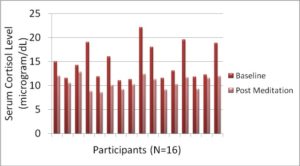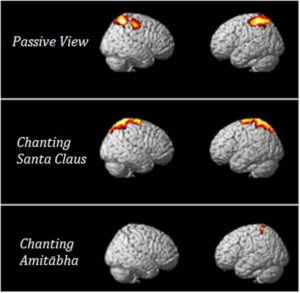Improve Social and Physical Conditions in the Isolated Elderly with Tai Chi
By John M. de Castro, Ph.D.
“A growing body of carefully conducted research is building a compelling case for tai chi as an adjunct to standard medical treatment for the prevention and rehabilitation of many conditions commonly associated with age,” – Peter M. Wayne
We all want to live longer. We celebrate the increasing longevity of the population. But, aging is a mixed blessing. The aging process involves a systematic progressive decline in every system in the body, the brain included. It cannot be avoided. Our mental abilities may also decline with age including impairments in memory, attention, and problem solving ability. These are called age related cognitive decline. In addition, many elderly experience withdrawal and isolation from social interactions. There is some hope as there is evidence that the cognitive declines can be slowed. For example, a healthy diet and a regular program of exercise can slow the physical decline of the body with aging. Also, contemplative practices such as meditation, yoga, and tai chi or qigong have all been shown to be beneficial in slowing or delaying physical and mental decline with aging.
Tai Chi has been practiced for thousands of years with benefits for health and longevity. Tai Chi training is designed to enhance function and regulate the activities of the body through regulated breathing, mindful concentration, and gentle movements. Only recently though have the effects of Tai Chi practice been scrutinized with empirical research. But, it has been found to be effective for an array of physical and psychological issues. It appears to strengthen the immune system, reduce inflammation and increase the number of cancer killing cells in the bloodstream.
Because Tai Chi is not strenuous, involving slow gentle movements, and is safe, having no appreciable side effects, it is appropriate for all ages including the elderly and for individuals with illnesses that limit their activities or range of motion. Tai Chi has been shown to help the elderly improve attention, balance, reducing falls, arthritis, cognitive function, memory, and reduce age related deterioration of the brain. The research, however, has studied socially active elderly. Unfortunately, many elderly individuals are socially isolated and do not often interact with others. These have been called the “hidden elderly.” It is not known if Tai Chi practice can be implemented and be effective with these socially isolated elderly individuals.
In today’s Research News article “Effects of tai chi qigong on psychosocial well-being among hidden elderly, using elderly neighborhood volunteer approach: a pilot randomized controlled trial.” See summary below or view the full text of the study at:
https://www.ncbi.nlm.nih.gov/pmc/articles/PMC5221552/
Chan and colleagues recruited elderly (66 to 103, mean 77, years of age) who were socially isolated and did not engage in any social activities. They were randomly assigned to receive either treatment as usual (control group), including social worker visits and reminders of available services, or Tai Chi practice for 60 minutes, twice a week, for 3 months and they were encouraged to continue practice at home. They were measured before and after the 3-month practice period and again 3 months later for social support, loneliness, mental health, self-esteem, and quality of life.
They found that Tai Chi practice produced a significant reduction in loneliness, significant increase in total satisfaction with social support, and physical quality of life with large effect sizes that were maintained for 3 months after the end of the intervention. In addition, the participants stated that they enjoyed the Tai Chi practice and 82% planned to continue. Importantly, there were no adverse effects recorded from engaging in the practice. Hence Tai Chi practice was successfully implemented with the “hidden elderly” and was found to be a safe and effective practice to improve their social and physical conditions.
It should be noted that this was a small group pilot study which did not contain a control group. Hence, conclusions must be tempered. The study, however, does provide evidence that implementation of Tai Chi practice with the “hidden elderly” is feasible and provides a strong rationale to perform a large randomized controlled clinical trial with active control conditions. Regardless, it appears that Tai Chi practice may improve the social and physical conditions in the isolated elderly.
“The benefits of Tai Chi for seniors are incredible. If you are looking for a low-impact, relaxing form of exercise that only requires about 20 minutes a day and rewards your efforts, Tai Chi is for you.“ – Ryan Malone
CMCS – Center for Mindfulness and Contemplative Studies
This and other Contemplative Studies posts are also available on Google+ https://plus.google.com/106784388191201299496/posts and on Twitter @MindfulResearch
Study Summary
Chan, A. W., Yu, D. S., & Choi, K. (2017). Effects of tai chi qigong on psychosocial well-being among hidden elderly, using elderly neighborhood volunteer approach: a pilot randomized controlled trial. Clinical Interventions in Aging, 12, 85–96. http://doi.org/10.2147/CIA.S124604
Abstract
Purpose
To test the feasibility and preliminary effectiveness of a tai chi qigong program with the assistance of elderly neighborhood volunteers in strengthening social networks and enhancing the psychosocial well-being of hidden elderly.
Patients and methods
“Hidden elderly” is a term used to describe older adults who are socially isolated and refuse social participation. This pilot randomized controlled trial recruited 48 older adults aged 60 or above who did not engage in any social activity. They were randomized into tai chi qigong (n=24) and standard care control (n=24) groups. The former group underwent a three-month program of two 60-minute sessions each week, with the socially active volunteers paired up with them during practice. Standard care included regular home visits by social workers. Primary outcomes were assessed by means of the Lubben social network and De Jong Gieveld loneliness scales, and by a revised social support questionnaire. Secondary outcomes were covered by a mental health inventory and the Rosenberg self-esteem scale, and quality of life by using the 12-Item Short Form Health Survey. Data was collected at baseline, and at three and six months thereafter.
Results
The generalized estimating equations model revealed general improvement in outcomes among participants on the tai chi qigong program. In particular, participants reported a significantly greater improvement on the loneliness scale (B=−1.32, 95% confidence interval [CI] −2.54 to −0.11, P=0.033) and the satisfaction component of the social support questionnaire (B=3.43, 95% CI 0.10–6.76, P=0.044) than the control group.
Conclusion
The pilot study confirmed that tai chi qigong with elderly neighborhood volunteers is a safe and feasible social intervention for hidden elderly. Its potential benefits in improving social and psychological health suggest the need for a full-scale randomized controlled trial to reveal its empirical effects.









